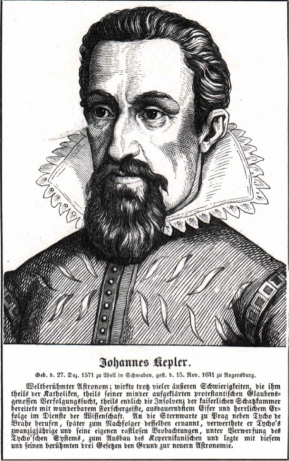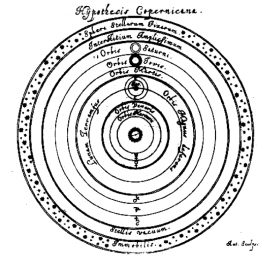The transformation of the geocentrical to the heliocentrical cosmology evolved during a long period of time. In the first period in early medieval times, Latin authors like Martianus Capella and Pliny, who allowed no quantitative description of the stellar movements, were adopted. It was only during the twelfth century that the manuscripts of Ptolemy’s Almagest reached Europe. However, the complex theory of stellar movements described in the Almagest could only be mathematically recalculated and empirically improved in the fourteenth century.

Image of Kepler: Source: Graßhoff/Ossendrijver for Spektrum: “Astronomie – ein antikes Großforschungsprojekt” (2017).
By combining two earlier traditions, Copernicus formulated a heliocentrical variant of Arabic predecessor models –a variant that resulted in the rapid development of exact astronomy after its publication in Copernicus’s ground-breaking work “De revolutionibus.” Finally, it was Kepler who completed the classical epicyclical conception of planetary models and created the ground for a new celestial mechanics based on physical principles. The historic adequacy of different concepts of theoretical change in astronomy is investigated in a research program covering a wide range of periods.

